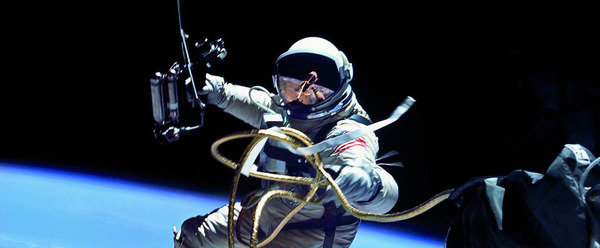Outer space
dal 1/10/2014 al 21/2/2015
Segnalato da
William Turner
Peter Paul Rubens
Max Ernst
Odilon Redon
Gustave Guillaumet
Bjorn Dahlem
Lee Bontecou
Agnes Meyer-Brandis
Via Lewandosky
Claudia Dichter
Stephan Andreae
1/10/2014
Outer space
Bundeskunsthalle der Bundesrepublik Deutschland, Bonn
The exhibits include artefacts from space travel and astronomy, documentary material, moon dust and meteorites, films, comics, space design, early photographs, masterpieces of art history, works of Classic Modernism, contemporary art, and multimedia installations.

curators Claudia Dichter and Stephan Andreae
Since time immemorial, space has been a place of yearning, a projection surface and the object of questing inquisitiveness. How did the universe evolve? Where do we come from? Where are we going? Are we alone? Are there other intelligent civilisations in the universe? What might life on other planets look like? Will we be able to make contact with aliens, should they exist? Philosophers, scientists, writers, film makers, artists, spiritual leaders, wackos, and visionaries alike are fascinated by these questions.
"Light this candle!" The astronaut Alan Shepard before his first spaceflight.
In this deliberately heterogeneous show key topics relating to outer space are represented in twelve evocatively designed areas (caves): from gravitation, extraterrestrials, the sun, moon, and stars, and rockets to black holes and UFOs. The exhibits include artefacts from space travel (spacesuits, objects that flew with astronauts, spiders, instruments etc.) and astronomy (telescopes, celestial maps etc.), documentary material (magazines, photographs, manuscripts, etc.), moon dust and meteorites, films, comics, space design, early photographs of the moon, masterpieces of art history (i.e. William Turner, Peter Paul Rubens), works of Classic Modernism (i.e. Max Ernst, Odilon Redon, Gustave Guillaumet), contemporary art (i.e. Björn Dahlem and Lee Bontecou), and multimedia installations (i.e. Agnes Meyer-Brandis, Via Lewandosky).
Space Travel Today
The first flights that enabled the departure from earth by overcoming gravity, manned space travel, and the landing on the Moon in 1969 reached a spectacular peak in the twentieth century. In the year 2000, mankind was provided with an outpost in space in the shape of the international space station ISS. In May 2014 the German astronaut Alexander Gerst landed there for a six-month stay. Also in 2014, the space probe Rosetta is expected to conclude its 7.1 billion-kilometre journey to the comet Churyumov-Gerasimenko where it is to examine the evolvement of a comet tail. The supplementary programme includes special events dedicated to both incidents.
On the Interface between Art and Science
Parallel to the acquisition of scientific and humanistic knowledge, artists, designers, writers, film makers, and architects have been concerning themselves with the subject of outer space. From the beginning, they worked on the interface between art and science, and fiction and fact, albeit with mutual influences between the different areas. In the course of the twentieth century, the creative potential of science fiction literature, artworks and films proved to be so inspiring that the ESA (European Space Agency) commissioned a study in order to test the fictional material with regard to its practicability for innovative technologies. The first countdown in spaceflight history was carried out on screen in Fritz Lang’s ‘Frau im Mond (Woman in the Moon)’ (1929). Subsequently NASA used this scene as an inspiration for its rocket launches. This interface is a recurring feature in a selection of artworks shown in the exhibition.
Visions, Dreams and Absurdities
The exhibition is not only concerned with plausible explanations of complicated scientific connections and artistic interpretations of scientific topics, but also visionary, humorous, dreamlike, and absurd phenomena. This includes the detailed designs for spaceships and plans for the colonisation of stars that the psychiatric patient Karl Hans Janke developed behind the walls of a mental institution in the GDR as well as the reports of UFO sightings recorded by the Swiss writer Lou Zinsstag.
The exhibition was developed in collaboration with the ‘Deutsches Zentrum für Luft- und Raumfahrt (DLR) (national aeronautics and space research centre of the Federal Republic of Germany)’, under the auspices of Federal Chancellor Dr. Angela Merkel.
Image: During the Gemini 4 mission on June 3, 1965, Ed White became the first American to conduct a spacewalk, Photo credit: NASA
Head of Corporate Communications / Press Officer
Sven Bergmann T +49 228 9171–204 bergmann@bundeskunsthalle.de
Media Conference: Thursday, 2 October 2014, 11 a.m.
The Art and Exhibition Hall of the Federal Republic of Germany
Museumsmeile Bonn
Friedrich-Ebert-Allee 4 53113 Bonn
Opening Times:
Monday closed
Tuesday and Wednesday 10 a.m. – 9 p.m.
Thursday to Sunday (and on all public holidays, including those on Mondays) 10 a.m. – 7 p.m.
The ticket desk closes 30 minutes before the museum's closing time.
Open on Fridays for registered groups and school classes from 9 a.m. (from 10 a.m. in the North-Rhine Westphalia school holidays).
standard price € 10 / concessions € 6,50 / Family ticket € 16,00 / Group ticket (min. group size 10; prices p.p.) € 7,50 / Happy Hour Ticket € 6



